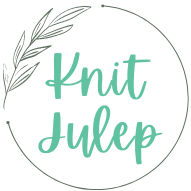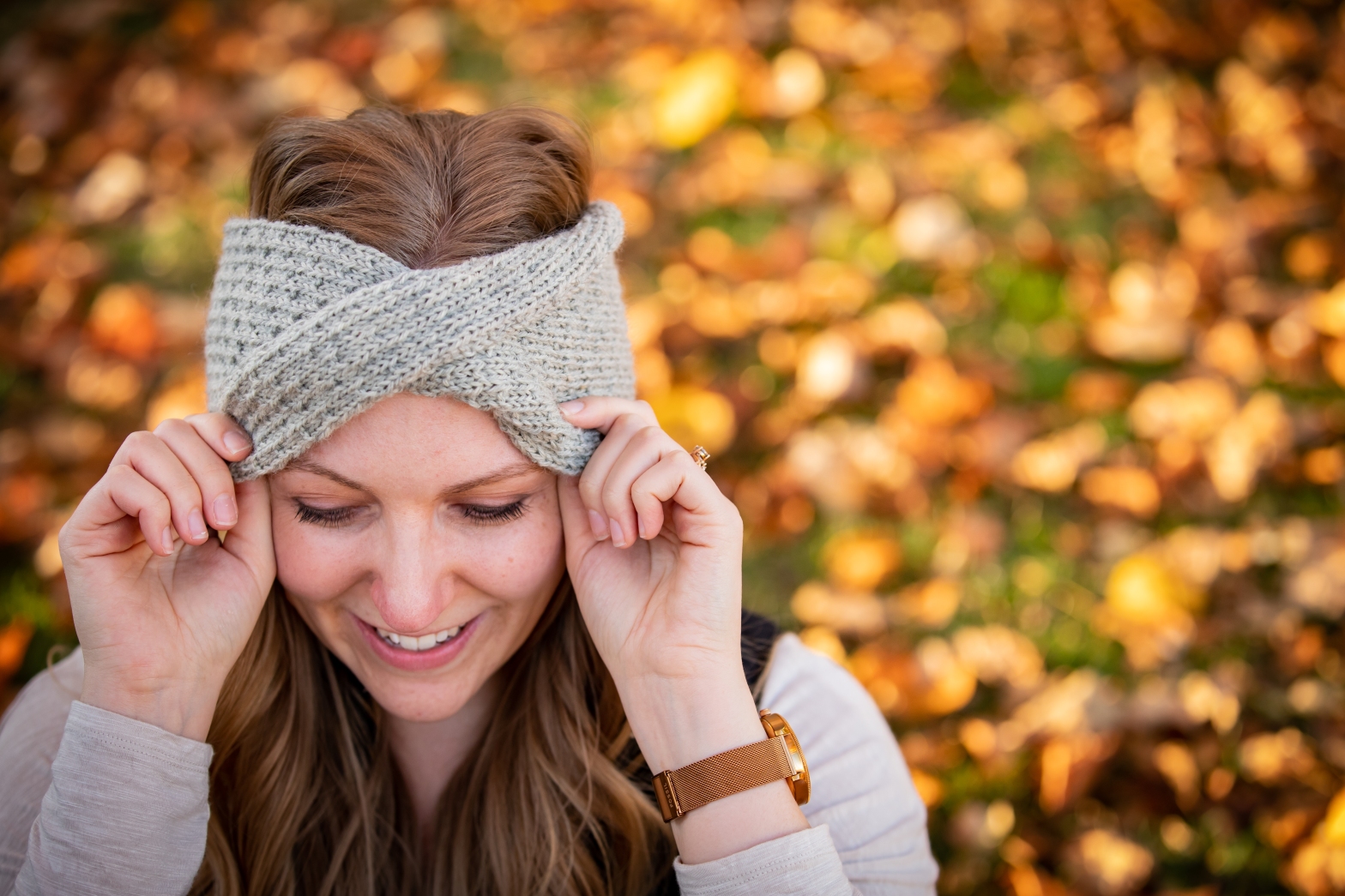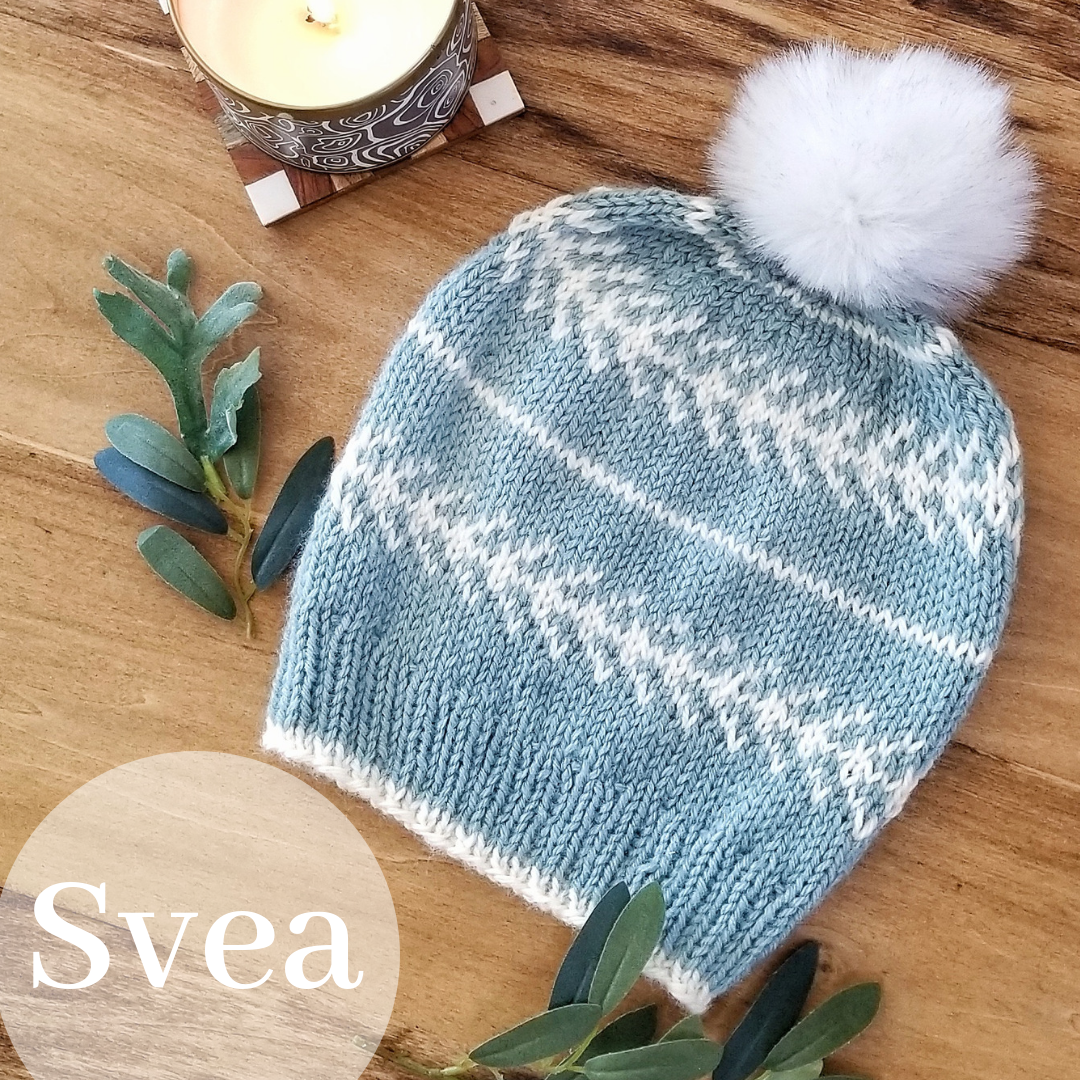The Sweetwater Beanie is a worsted weight hat with a simple spiral cable that's perfect for quick knitting.
Introducing The Quarry Twist Headband
The Quarry Twist Headband is a cozy textured headband that's perfect for in between seasons.
How To Make The Polar Fur Cowl In 1 Hour – Free Knitting Pattern
Get the step-by-step instructions to knit your own Polar Fur Cowl in under 1 hour with this free pattern.
Introducing The Juniper Stretch Beanie
The knitting pattern for Juniper Stretch Beanie, a bulky knit hat with stretch you won't believe, is now available! This hat is one of my personal favorites. I've been wearing it and selling finished versions of it at craft markets for over a year. The biggest selling point of the Juniper Stretch Beanie is theContinue reading "Introducing The Juniper Stretch Beanie"
Introducing The Plume Cables Beanie
The knitting pattern for Plume Cables Beanie, a cabled knit beanie inspired by a peacock's plume, has a fresh new look! This hat was one of my very first designs way back in 2014, and it's been a staple in my winter wardrobe ever since. I thought it was time to give the written patternContinue reading "Introducing The Plume Cables Beanie"
My Favorite Knits of ‘All Creatures Great and Small’
Get ready for a display of some fantastic 1930s knits in this new PBS MASTERPIECE series.
Baby Yoda-Inspired Knit Hat Pattern – Free!
Get the step-by-step instructions to knit your own Baby Yoda-inspired hat with this free pattern.
Free Knitting Pattern: Afternoon Trivet
Come 3 p.m. in the afternoon, I always have a craving for a warm cup of tea and a baked treat as a quick pick-me-up. And having a cute, simple trivet or hotpad nearby makes the ritual even better. My Afternoon Trivet is perfect for setting out my tea cup or warmed plate of muffins.Continue reading "Free Knitting Pattern: Afternoon Trivet"
New Hat Pattern: Svea Gets Updated!
I've been working on an update to my Svea hat pattern I released a few years ago, and can finally cross it off my to do list! It's a simple colorwork hat inspired by snowy tree limbs against a winter sky. I love how the faux fur pompom at the top gives a fun snowballContinue reading "New Hat Pattern: Svea Gets Updated!"
8 Must-Haves To Keep In Your Knitting Bag
I've been caught too many times without the proper knitting tool. I can't tell you how many times I've put a work-in-progress aside because I couldn't find a tapestry needle, stitch holder or some other tiny object that I needed to finish the piece. And then I uncover the project 5 months later, unfinished andContinue reading "8 Must-Haves To Keep In Your Knitting Bag"










